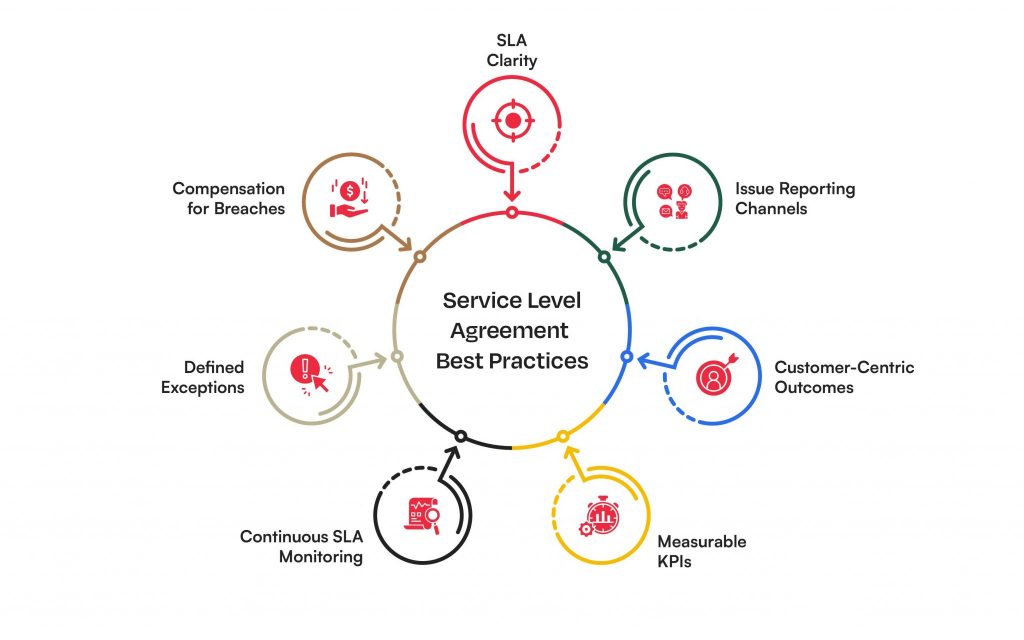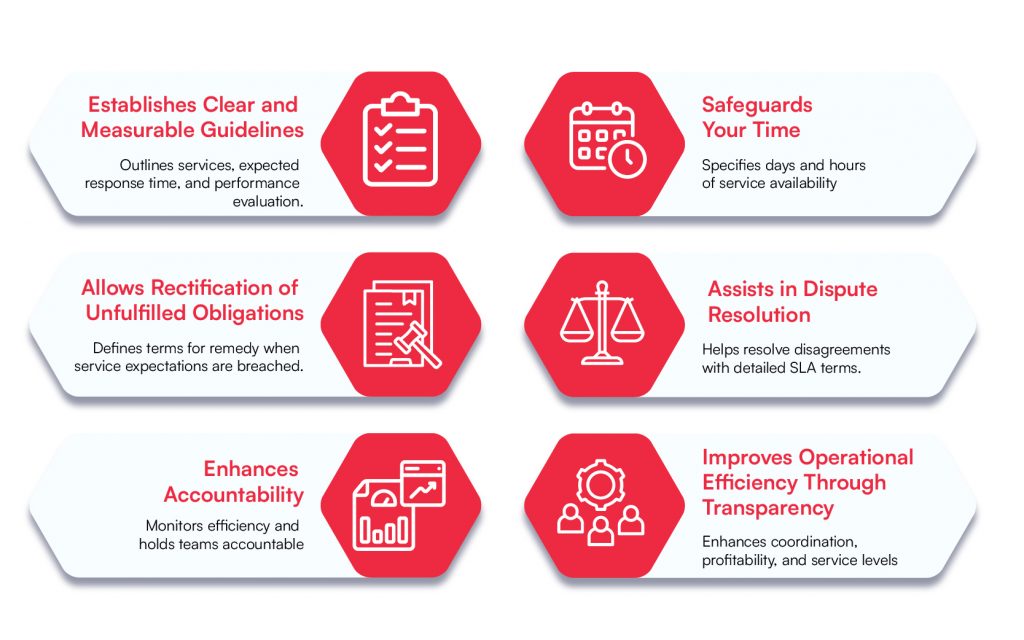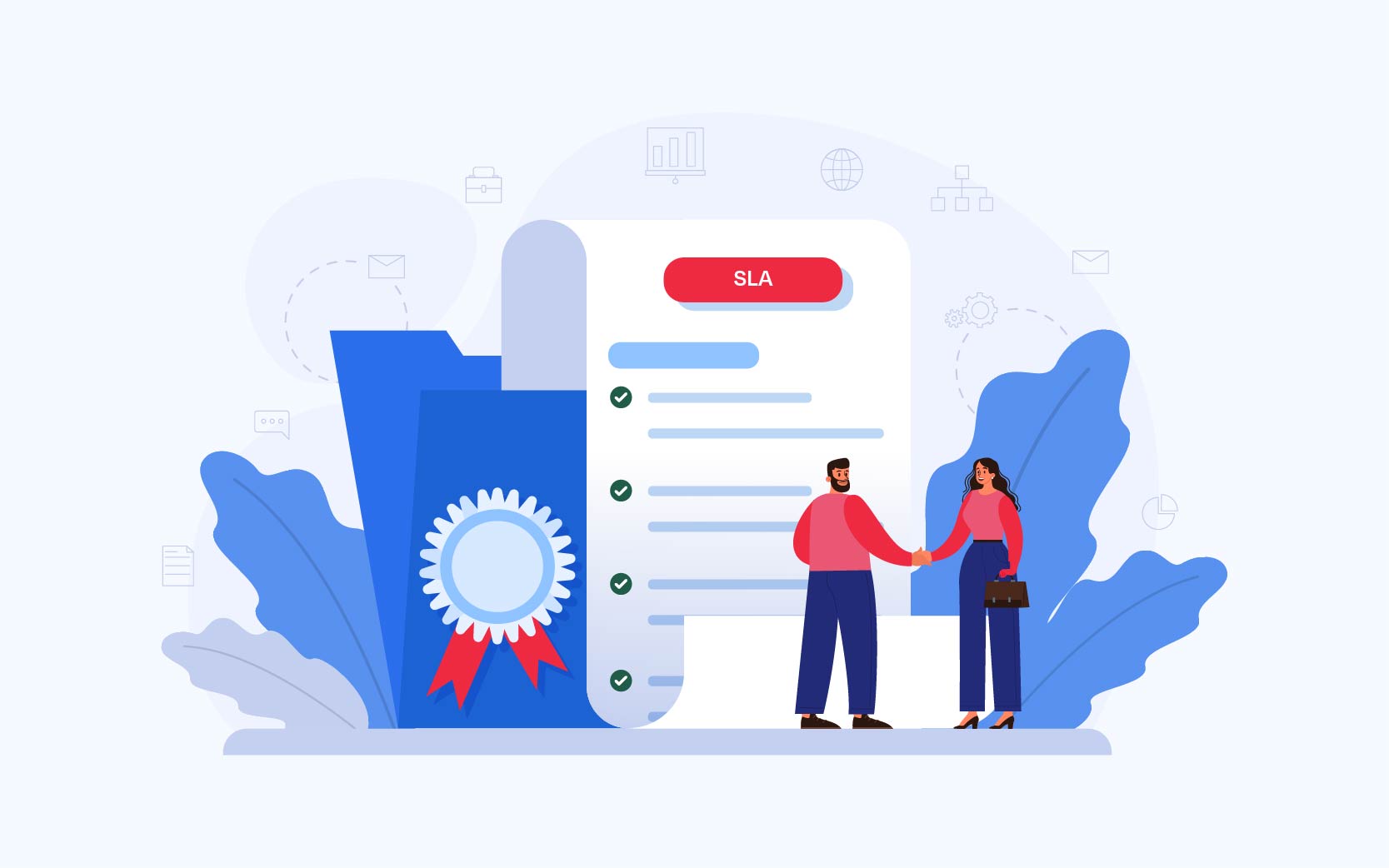Table of Contents
3. How To Efficiently Manage SLAs With Helpdesk Software?
4. Service Level Agreement Best Practices
5. What Are The Components Of A Well-Defined SLA?
7. Why Kapture’s Helpdesk ticketing for SLA Management?
Imagine you’re about to embark on a grand adventure. You’ve meticulously planned your route, booked your transportation, and even researched the best places to grab a bite along the way. But what happens if your trusty guide cancels at the last minute, or the train you were supposed to catch gets delayed?
This is where a Service Level Agreement (SLA) comes in. Think of it as a detailed itinerary co-created by you and your travel companion (the service provider). The SLA management outlines exactly what to expect during the journey: the destinations, the mode of transport, and even estimated arrival times. It also lays out what happens if things go awry, like a compensation plan for missed connections or unexpected detours.
Just like a well-crafted travel itinerary ensures a smooth and enjoyable adventure, a well-defined SLA paves the way for a successful business relationship. Both you and the service provider know what’s expected, how long things should take, and how to handle any bumps along the road.
What is SLA Management?
SLA is a set of agreed-upon regulations or contracts under which one party has promised to offer another a set of deliverables or services. The goal of a Service Level Agreement is to set expectations when a customer and service provider agrees to do business. It specifies the minimum acceptable level of service that will be provided.
Once you establish and set your SLAs with the customers, it is important to manage and track them to ensure that your team keeps up with the SLA consistently.
SLA management entails monitoring and reporting services, resolving disagreements, and going above and beyond the agreement on how to develop the best SLA management standards. The sections that follow will help you with this.
What are the types of SLA?
Each one of the SLA types establishes a contract pertaining to a certain industry or business relationship, however, they can be broadly classified into three types.
1. Customer-based SLA
A customer-based SLA is an agreement that’s centered around a single customer and covers all the services used by the customer.
For example, in the relationship between an internet service provider and a subscriber, the SLA covers the services available, the duration of services provided, and promised uptime. The agreement varies from customer to customer based on the chosen plan.
2 . Service-based SLA
This SLA covers a single type of service that is provided to all customers.
For example, if the Networking and Resource Management departments use IT Helpdesk services, the same SLA stands for the Helpdesk and the two departments because this SLA encompasses an identical type of service for all of its customers.
3. Multi-Level SLA
A multilevel SLA is a combination of different levels or tiers of the agreement aimed at addressing the requirements of different customers.
A multilevel SLA is useful where various customers use different service plans or in cases where you have to manage premium customers.
How To Efficiently Manage SLAs With Helpdesk Software?
When SLAs let you benchmark your business and help maintain consistent performance and service standards, managing them is a challenge in itself though.
This is why most businesses are turning to customer support solutions to take up SLA management.
Therefore, the wisest choice would be to delegate SLA tracking, automation, and reporting to a Helpdesk with SLA support.
1. SLA Monitoring And Tracking
- An SLA is assigned to a customer inquiry based on predefined criteria, such as customized SLAs for high-priority customers.
- The help desk software tracks time, reports SLA violations, and pauses the timer while waiting for a response from customers.
2. Prioritizing Service Tickets
- Help desk software allows you to go beyond the First come, First serve policy by prioritizing service issues based on urgency or criticality.
- For example, service agents can easily lose track of time while handling multiple requests throughout the day and may wind up missing SLA deadlines. As a result, service agents are alerted to handle tickets that are on the verge of an SLA breach. SLA for support tickets ensures how quickly a ticket will be closed.
- Assign priority levels depending on specific keywords in the incoming query as well.
3. Automate Escalations
- Helpdesk software automatically escalates and flags tickets that do not meet their closure deadline, notifying the management or next-in-line staff of the breach.
- At each escalation step, the ticket is reassigned to a specific agent or expert for resolution.
- When the issue is still unsolved, it proceeds through the customized escalation path to advance up the hierarchy for case resolution.
4. SLA Reporting
- Understanding the points of SLA violations is critical to improving the customer experience.
- With the robust reporting features of Helpdesk software, you can develop a better understanding of the frequency of SLA violations.
- For example, if the majority of SLA violations occur on a certain day of the week, rope in extra staff to address service tickets on that day.
- Furthermore, if a customer requests an SLA report, the Helpdesk software allows you to provide them with a customer-specific SLA report.
Service Level Agreement Best Practices

1. Make Service-Specific and Attainable SLAs
- Mention the scope of services precisely so that there is no ambiguity about your accountability in the event of an issue.
- Explicitly stating the services covered reduces the likelihood of any discrepancies.
- It is critical to ensure that the SLA is not under-delivered, so make sure that your resource availability is adequate to manage the service ticket requirements.
2. Set Clear Expectations Around Issue Reporting
- Allow your customers to know exactly how to reach you if they have a problem.
- Mention your preferred form of communication, such as phone, SMS, email, chat, or helpdesk portal.
- A well-organized system eliminates confusion and ensures that the reporting process is properly positioned.
3. Align SLAs With The Desired Customer Requirement
- Create SLAs depending on the desired outcome of the customers.
- This is significant because even if you meet your SLA service statistics, you may not be helping the customer in accomplishing their objectives. For example, when an Internet service provider guarantees high availability with an uptime of 99.9% and unfortunately the 1% downtime of service occurs at customers’ crucial business hours the customers are nothing but unhappy.
- The best practice in this situation is to attend to the needs of the customers while developing SLAs for them.
4. Include Realistic Performance Metrics
Incorporate key performance indicators that provide customers with a clear and quantifiable baseline of the service offerings. Service-level agreements must contain numerous service-performance metrics such as,
- Defect rate: The percentage of errors that occur throughout the delivery of a solution.
- Average response time: The average time taken by staff to respond to a ticket.
- First call resolution: The percentage of tickets or calls resolved without necessitating the requester to make a second contact.
- Turnaround time: The amount of time taken to complete a task or fulfill a request.
- Meantime to recover: The average time it takes to recover from a product or service failure.
5. Monitor, Review, And Modify SLAs Periodically
- As part of continuous service improvement, review and update an SLA whenever changes to a particular service are envisioned.
- Obsolete service level agreements (SLAs) do not depict your organization’s present value propositions and workflows.
6. Accommodate Exceptions In The SLAs
- It is also critical to pinpoint the areas of service where an SLA does not hold.
- Outline the uncommon conditions in which your service could be compromised. For context, consider the following example of an SLA stating an exception: “If the Customer is unable to access their Virtual Private Cloud Service (100% SLA) across the Internet (99.99% SLA), that failure does not constitute a Service outage of the Virtual Private Cloud Service.” – Source
- In the above example, a service outage is caused by another service provider with a slower SLA and does not fall under SLA breach for the first service provider.
7. Include Customer Compensation Clause
- There must be a condition that addresses compensation in the event of SLA violations.
- This increases the responsibility and trustworthiness of your organization.
- Some options to consider include a money-back guarantee or a discount on the following month’s subscription price.
Last but not least, make sure that the clients understand the jargon used in the SLA. Do not, for example, leave customers puzzled over what to make of Response time and Resolution time.
What Are The Components Of A Well-Defined SLA?
1 . Agreement Summary
- This gives a general overview and should include an outline of the service provided, the name of the parties, and service timelines.
2 . Service Description
- This section states the explicit details of services rendered, modes of service availability (live agent support, AI-enabled self-help, and so on), and timeframes for issue resolution.
- Also, include information related to systems that are supported, dependencies, processes, technology, and applications.
3. Process monitoring and service level reporting
- Monitoring and reporting service performance levels are a very mandatory part of an SLA as these reports have to be given to customers when sought.
- This will be based on mutually discussed and agreed-upon conditions such as who reports the performance, what information is given to the customer, and the frequency of reporting.
- Include the metrics that will be tracked for performance analysis.
4. Disaster Recovery Process
- The SLA must clearly mention the procedure for issue resolution such as who will report the issue to whom, and what steps will be followed to address the incident.
- In other words, the SLA must have a perfect problem management process defined within it.
5 . Penalties for failing to uphold a commitment
- Include the steps that will be followed in the event of
- non-performance or failure to achieve SLAs
- Service outages
- SLA violation by the customer
6. Exclusions of SLA
- Include circumstances for when the agreement’s clauses become invalid, such as in the wake of unforeseen events like natural catastrophes. Be clear and concise about the services that are not offered.
Why Are SLAs Important?

1 . Facilitates the establishment of explicit and measurable guidelines
It outlines the services you will deliver, the expected response time, and the performance evaluation mechanism.
Customer service teams, for example, utilize SLAs to set expectations for service performance, response time, and customer satisfaction.
2 . Allows rectification of unfulfilled service obligations.
In addition to legitimizing the service expectations, SLAs define the terms for remedy when agreement criteria are breached.
3 . Enhances accountability
SLAs openly monitor your customer service team’s efficiency and hold them accountable for meeting the organization’s requirements.
4 . Safeguards Your Time
There will always be customers who have high expectations of your service and demand more of your time than they are obliged to as per service standards.
An SLA agreement specifies the days and hours of service availability, thus preventing you from getting drawn into services that are not within your scope.
5 . Assist In Dispute Resolution
Disagreements creep in at times but a detailed SLA comes to the rescue.
For example, if a consumer complains without cause, you may be able to show that your organization routinely reacts to and resolves problems within the agreed-upon SLA timelines, ideally, with the backing of response time reports or other valid metrics.
6. Improves Operational Efficiency Through Transparency
SLA is a method of increasing contact center coordination, profitability, and service levels by assisting a service provider in meeting standardized guidelines and performance.
SLA allows both parties to develop a transparent relationship and mutual trust thereby letting you forge ahead as successful partners.
Why Kapture’s Helpdesk ticketing for SLA Management?
In opposition to a rigid and non-conforming tool, Kapture enables the best ways to manage Helpdesk Service Level Agreement through customization capabilities that take care of,
- Setting up SLAs exactly as you have structured them in the agreement.
- Set product-specific conditions since this enables the creation of SLAs based on types of products or just about any aspect, allowing agents to prioritize their time based on the severity of the request.
- The Pause Capabilities allow you to pause SLAs on specific days to avoid SLA violations.
Book a demo with Kapture to discover a multitude of amazing features like,
- Real-time SLA progress monitoring
- Real-time SLA report generation
- Timers and auto-notifications
- Auto-escalations for SLA breach
- Keyword tagging to trigger an escalation
,
,
,
,
,
,
,
,
,
,
,
,
,
Frequently asked Questions
Response time is the amount of time it takes for the service provider to acknowledge a customer issue. Resolution time is the total time it takes to fix the problem.
SLAs are typically measured using a variety of metrics, such as uptime, response time, resolution time, and first call resolution rate.
The best way to ensure you are getting the most out of your SLA is to clearly understand the terms of the agreement and to communicate your expectations to the service provider. It is also important to monitor SLA compliance and to report any violations to the service provider.
– Sets expectations for both parties (customer & service provider).
– Improves service quality and accountability.
– Reduces misunderstandings and disputes.
While valuable, SLAs can’t account for every situation. Unforeseen events or limitations beyond the service provider’s control (e.g., natural disasters, internet outages) might cause service disruptions not covered in the SLA.
About the Author | |
 | Seema C Mohan |
| Seema C Mohan is passionate about all things XaaS and loves to write value-added content. She has been in Business Process Management in the past and has published technology articles in journals. | |








